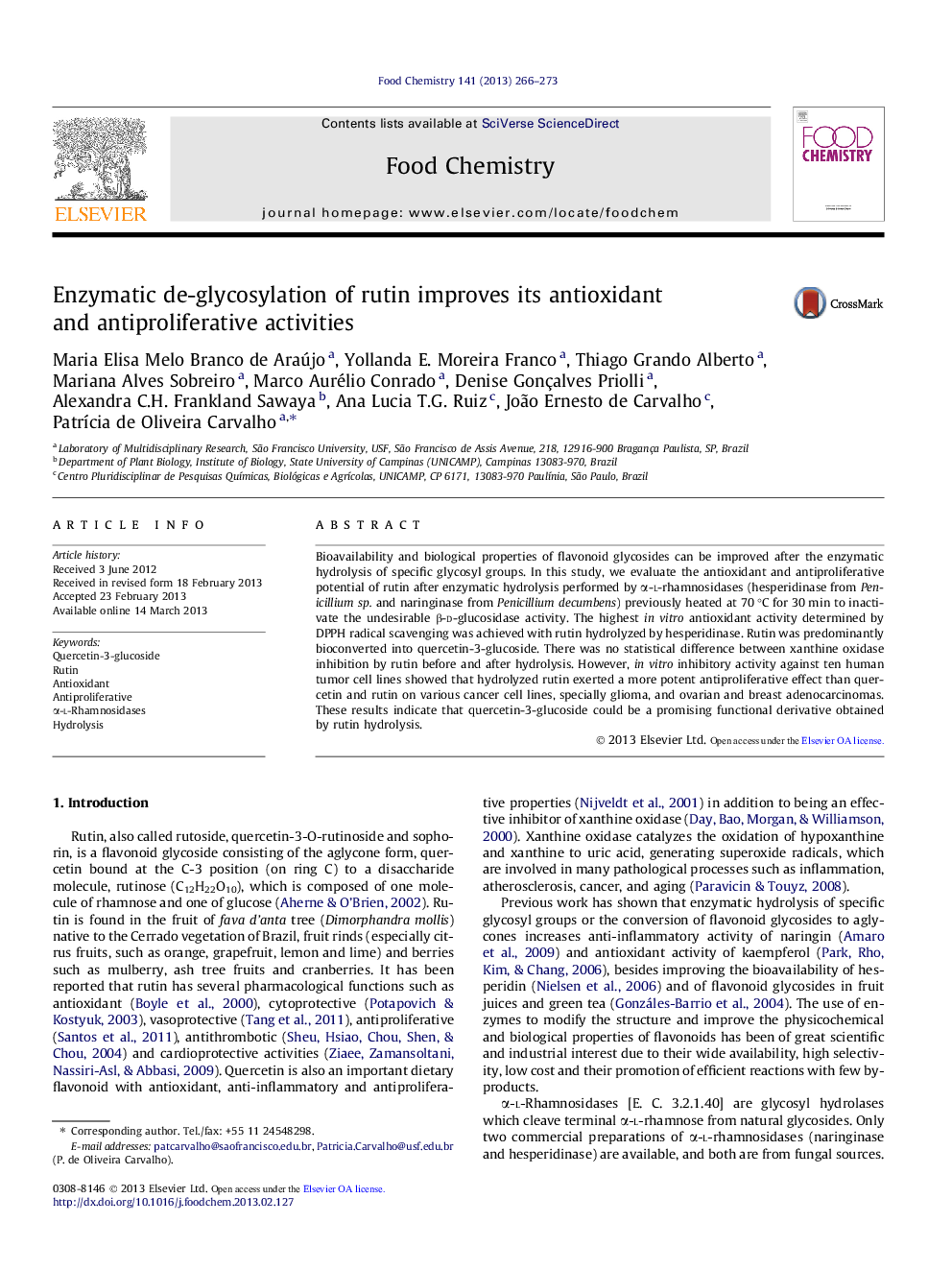| Article ID | Journal | Published Year | Pages | File Type |
|---|---|---|---|---|
| 10542315 | Food Chemistry | 2013 | 8 Pages |
Abstract
Bioavailability and biological properties of flavonoid glycosides can be improved after the enzymatic hydrolysis of specific glycosyl groups. In this study, we evaluate the antioxidant and antiproliferative potential of rutin after enzymatic hydrolysis performed by α-l-rhamnosidases (hesperidinase from Penicillium sp. and naringinase from Penicillium decumbens) previously heated at 70 °C for 30 min to inactivate the undesirable β-d-glucosidase activity. The highest in vitro antioxidant activity determined by DPPH radical scavenging was achieved with rutin hydrolyzed by hesperidinase. Rutin was predominantly bioconverted into quercetin-3-glucoside. There was no statistical difference between xanthine oxidase inhibition by rutin before and after hydrolysis. However, in vitro inhibitory activity against ten human tumor cell lines showed that hydrolyzed rutin exerted a more potent antiproliferative effect than quercetin and rutin on various cancer cell lines, specially glioma, and ovarian and breast adenocarcinomas. These results indicate that quercetin-3-glucoside could be a promising functional derivative obtained by rutin hydrolysis.
Related Topics
Physical Sciences and Engineering
Chemistry
Analytical Chemistry
Authors
Maria Elisa Melo Branco de Araújo, Yollanda E. Moreira Franco, Thiago Grando Alberto, Mariana Alves Sobreiro, Marco Aurélio Conrado, Denise Gonçalves Priolli, Alexandra C.H. Frankland Sawaya, Ana Lucia T.G. Ruiz, João Ernesto de Carvalho,
